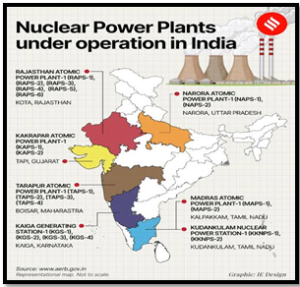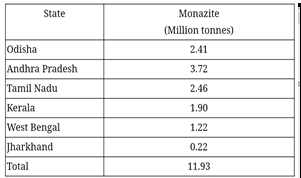INDIA-RUSSIA AGREEMENTS ON KUDANKULAM NUCLEAR PLANT UNITS
Why in the News?
- India and Russia signed significant agreements concerning the construction of future power-generating units at the Kudankulam nuclear power plant.
Source: IE
About India’s Nuclear Energy:
- Contribution to Electricity:
- Nuclear energy ranks as the fifth-largest source, providing approximately 2% of India’s total electricity.
- Current Infrastructure:
- India hosts over 22 nuclear reactors across 7 power plants, collectively generating 6,780 MW of nuclear power.
- The reactor types include 18 Pressurized Heavy Water Reactors (PHWRs) and 4 Light Water Reactors (LWRs).
- Recent Developments:
- In January 2021, the Kakrapar Atomic Power Project (KAPP-3), India’s largest indigenous PHWR variant (700 MWe), was connected to the grid.
- Thorium-Based Nuclear Plant:
- India is pioneering an indigenous thorium-based nuclear plant, “Bhavni,” utilizing Uranium-233.
- The experimental plant “Kamini” is already operational in Kalpakkam.
| About 3 Stage Nuclear Program
· Origin and Architect: The late H. J. Bhabha, recognized as India’s nuclear power development pioneer, formulated the 3 Stage Nuclear Program. · Program Objective: Aimed at Producing energy using Thorium as fuel , the program seeks complete self-sufficiency in nuclear energy generation. · Reason: India faces limited native uranium resources, driving the focus towards alternative sources for sustainable nuclear power. Abundant Thorium reserves in India serve as a strategic resource for the envisioned nuclear program. · Thorium Reserves in India:
Note: Monazite is the Mineral in which thorium is found. |

 Source: IE
Source: IE Source: PIB
Source: PIB

